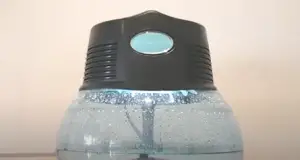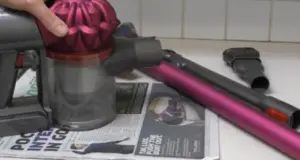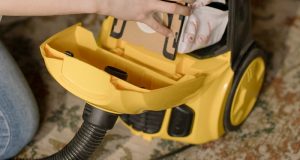It is important to know the vacuum suction power of the vacuum machine before you buy it. Consumers want vacuum cleaners that offer the best cleaning capabilities. Most consumers compare this cleaning ability to suction. So you need to know how to measure vacuum suction?
In order to measure the suction of a vacuum cleaner, first, you need to have a complete idea about the specification of that machine. Some people cannot quantify the difference between low and high suction. To understand these two important things, you have to measure the air intake of a vacuum machine. And there are different ways to measure this air. It is essential for you to know how to choose a strong suction. So keep reading this article.
How To Measure Vacuum Suction
The main responsibility of an ideal vacuum cleaner is to clean all types of dirt by sucking. The motor inside the cleaner does the job of sucking the dirt. And sucking debris requires a lot of pressure. This force of sucking is called the suction of that vacuum cleaner. So it is essential to have basic knowledge about this suction measurement before buying a vacuum machine.
Here we are exposing the ways to measure the suction of any vacuum cleaner. Follow the paragraph below to learn more about the ways.
Use The Pascal’s
Since suction power is needed to produce pressure, vacuum measurement is a good way to do this in terms of Pascal. You should know that Pascal is equal to 1 Newton force per unit square meter. In a good vacuum, the normal pressure measurement is 20 kilopascal. This means that the suction of a good quality vacuum machine is equal to approximately 2 tons of energy per square meter.
Use The Watts
Calculating watts for vacuum suction pressure is a much easier way. This is very common with vacuum suction measurements. The range of watts in a vacuum ranges from almost 40 to 2500 watts. Although the vacuum suction power watts are a completely different thing.
As an example, if the total vacuum power is 1600 watts, then the suction consumes about 360 watts from that power. And that power is suitable for good suction. Now you might be wondering what the rest of the power is used for? Well, the remaining wattages are for other sections of the vacuum.
Use The Amps
This is currently the most widely used method for measuring vacuum suction. It is similar to wattage in that it differs from vacuum suction energy consumption. The range of amps is around 4 to 12 amps. If you like to convert watts from amps, you need to know a formula for this.
The formula: amps * 120 volts = watts. Note that volts are 120 in the US. According to this formula, you can measure the power of vacuum suction.
Use The Airflow
Airflow has a deep relationship with the calculation of suction power. Because it defines how to carry dirt. Some people comparing this measurement with CFM. This means replacing how many cubic feet of air per minute in the vacuum. The higher the CFM value in a vacuum cleaner, the higher the suction power. Typically, 100 CFM or more is considered good suction.
Check The Voltage
You may not believe that voltage is an ideal way to measure vacuum suction. In the US, the standard vacuum suction is 120 volts to select. The house, however, sometimes drops to 110 volts. This is because of the occasional voltage drop in the house wire. So if you don’t want to get in trouble for measuring vacuum suction, you can simply go for volts.
The Water Lift Or Sealed Suction
Lift or seal suction is a much older method. Basically, this is an experiment. To test this, a tube is attached to the water-filled container. If the water rises at a high rate, then vacuum suction is good. But this test does not work for all vacuum cleaners. Because now there are many high quality and design vacuum machines in the market.
Although this test is still quite effective in terms of checking vacuum suction power. Hence, if the water level is equal to or greater than 90 inches, then that vacuum suction is stronger.
Examine The Horsepower
Horsepower is a rating system that was previously used for marketing purposes and to gain the trust of customers. It has nothing to do with vacuum cleaners in the real world. But fortunately, it clicks to measure the suction of the vacuum machine. As a result many companies often refer to current vacuum cleaners as peak horsepower.
Things to Check While Buying a Vacuum Cleaner
If you are going to buy a vacuum cleaner for the first time, you must check some specifications. Because some special specifications tell that vacuum is good or bad.
The Filtration
When checking the specifications of a vacuum cleaner, first of all, give priority to filtration. Since a good filter is the heart of that vacuum cleaner and it absorbs all the dirt. In general, cleaning ability depends a lot on filtration.
Cleaning Equipment’s
Cleaning equipment must be of good quality. This is because airflow requires advanced equipment support to clean all types of dirt. Such as powerful nozzle, strong body, brush, hose, and so on. Also, the facility of appropriate handle system which reaches all your places comfortably.
Capability
The capability of a vacuum means larger dust bag or container fills, and better airflow. When you pay attention to these things, you will be able to buy a better quality vacuum cleaner automatically.
Quality
You can select the brand to assure the quality. Be sure to check the reputation and customer reviews when choosing a brand. Because Vacuum is a much-needed household item that you won’t be interested in buying again.
Conclusion
Measuring the suction of a vacuum can be a tough task unless you know its proper ways. If you want to buy a vacuum cleaner with good suction, the above ways might help you. Let us know which of the method worked for you.





